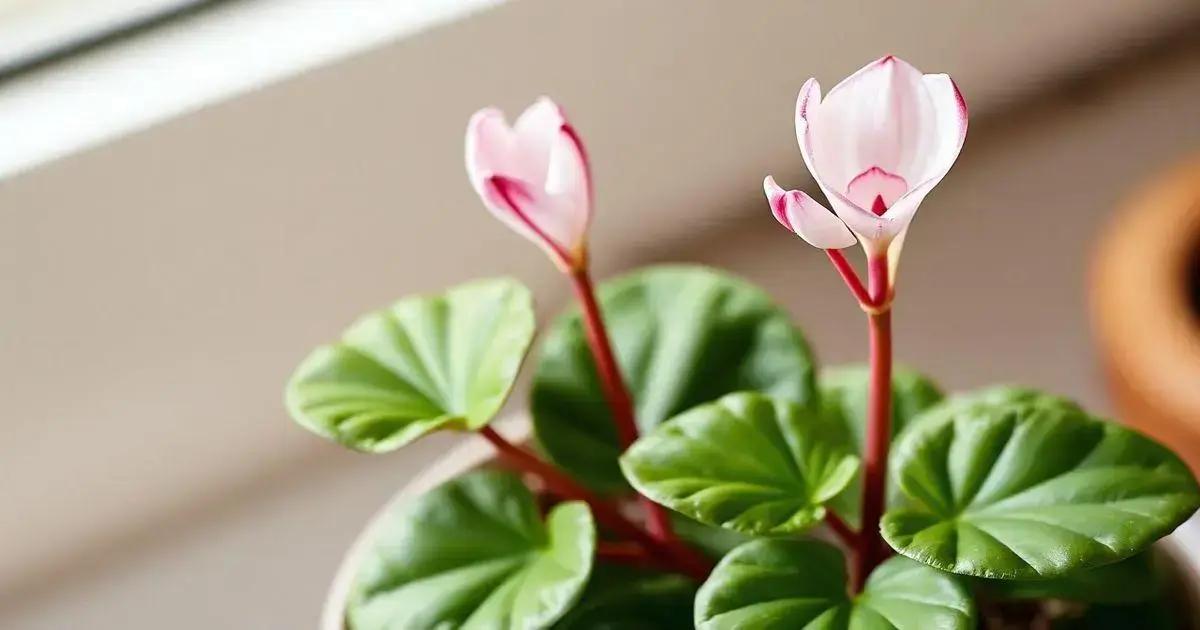How to Take Care of Cyclamen Plant: 5 Secrets to Thriving Blooms
How to take care of cyclamen plant is often a question for both beginners and seasoned gardeners. These beautiful flowers can captivate anyone with their vibrant colours and delicate blossoms. Yet, they can be tricky to maintain without the right knowledge. Let’s explore how simple adjustments can ensure they thrive throughout the year.
Table of Contents
ToggleEssential watering techniques for cyclamen plants
Understanding how to take care of cyclamen plants effectively begins with mastering essential watering techniques. Proper hydration is vital for keeping your cyclamen healthy and vibrant. Without enough water, these lovely plants may wilt or fail to bloom, while overwatering can lead to root rot. Let’s dive into the best practices for watering cyclamen.
Key watering practices for cyclamen plants
- Check the soil moisture: Always monitor the dampness of the soil before watering. Cyclamen prefer their soil to dry slightly between waterings.
- Water evenly: Use a watering can with a narrow spout to control the flow. Aim to water the soil directly, avoiding the leaves and flowers.
- Water frequency: During the growing season (fall and winter), water every 1-2 weeks, but reduce this in the summer when the plant is dormant.
- Drainage: Ensure your pot has drainage holes and allow excess water to escape, preventing soggy soil.
Signs of overwatering and underwatering
Recognizing the signs of improper watering is crucial. Below are common indicators:
- Overwatering: Yellowing leaves, mushy stems, or wilting plants.
- Underwatering: Dry, crispy leaves, and drooping flowers.
Best practices for adjusting your watering schedule
- Use a moisture meter to gauge soil hydration accurately.
- Adjust your watering frequency based on seasonal changes.
- Test the soil with your finger; if it feels dry up to an inch down, it’s time to water.
For those delving deeper into indoor gardening, consider exploring indoor gardening techniques for more comprehensive care guidance.
By following these essential watering techniques for cyclamen plants, you’ll help foster a thriving environment for your beautiful blooms.
Optimal light conditions for healthy cyclamen growth

Optimal light conditions for healthy cyclamen growth are essential for vibrant blooms and robust foliage. Understanding the lighting needs of these beautiful plants can significantly impact their overall health. Cyclamen thrive best in bright, indirect sunlight, which helps maintain their delicate balance.
Ideal light conditions for cyclamen plants
- Bright, indirect light is best: Too much direct sunlight can scorch the leaves, while too little can inhibit blooming.
- Placement matters: Position your cyclamen near east or west-facing windows for optimal light exposure.
- Rotation: Turn your plant every couple of weeks to ensure even growth and prevent it from leaning towards the light.
Signs of proper light conditions
How do you know if your cyclamen is getting the right amount of light? Look for these indicators:
- Healthy, vibrant leaves that are a rich green color.
- Consistent blooming during the appropriate season.
- No leggy or stretched appearance, which indicates insufficient light.
Adjusting light conditions for seasonal changes
As seasons change, so does the intensity and angle of sunlight. Follow these tips:
- During summer, consider moving your cyclamen further from the window to reduce exposure.
- In winter, your cyclamen may need more light; adjust its position closer to the window.
- Use sheer curtains to diffuse bright sunlight without blocking it entirely.
For further insights on caring for your indoor plants, visit exploring indoor gardening techniques for a comprehensive understanding of cyclamen care.
By recognizing and implementing these optimal light conditions for healthy cyclamen growth, you will cultivate a flourishing indoor garden.
Common cyclamen problems and how to fix them
Common cyclamen problems and how to fix them effectively can make all the difference in maintaining your plant’s health. Understanding the signs of distress is crucial for any plant parent. Cyclamen are generally hardy but can face specific challenges that, when addressed promptly, restore their beauty and vitality.
Identifying typical issues with cyclamen
- Yellowing leaves: This may indicate overwatering or insufficient light.
- Wilting blooms: Usually a sign of underwatering or scorching from direct sunlight.
- Leaf drop: Can occur due to stress from changes in temperature or humidity.
- Brown spots: Often result from fungal infections or water quality issues.
Step-by-step solutions to common cyclamen issues
Here’s how to address these common problems:
- For yellowing leaves: Reduce watering frequency and ensure adequate indirect light.
- For wilting blooms: Water your plant slightly more and check its placement near windows.
- For leaf drop: Maintain stable temperatures and humidity levels around the plant.
- For brown spots: Switch to distilled or rainwater and ensure proper air circulation.
Preventing cyclamen problems
Prevention is the best cure. Keep these tips in mind:
- Regularly check the soil moisture before watering.
- Provide proper ventilation and avoid cold drafts.
- Rotate the pot every few weeks for balanced light exposure.
To enhance your indoor gardening knowledge, don’t miss exploring indoor gardening techniques for comprehensive care tips.
By understanding and tackling common cyclamen problems and how to fix them, you can ensure your plant remains a stunning focal point in your home.
In conclusion
Caring for cyclamen requires understanding their specific needs, including optimal lighting, proper watering techniques, and identifying common problems. By following the tips provided for each aspect of cyclamen care, you can nurture these beautiful plants effectively. Remember, keeping an eye on their health is key to ensuring vibrant blooms and lush foliage. For additional insights and tips on enhancing your indoor garden, continue your journey towards becoming an expert cyclamen caretaker.

